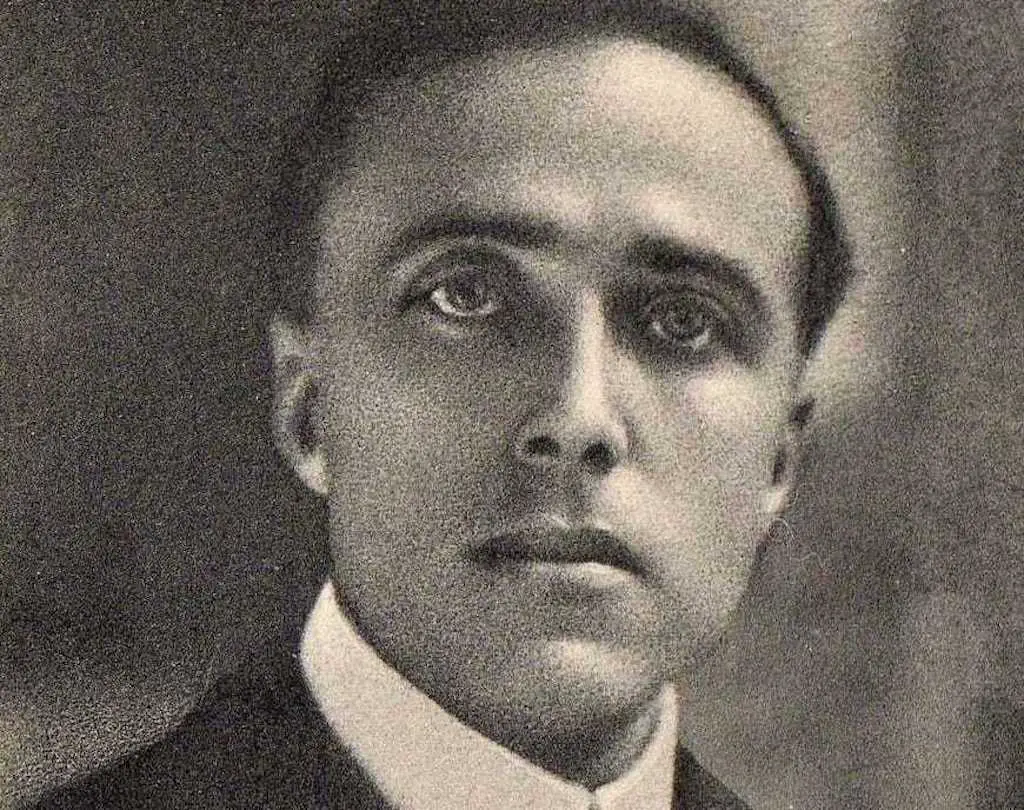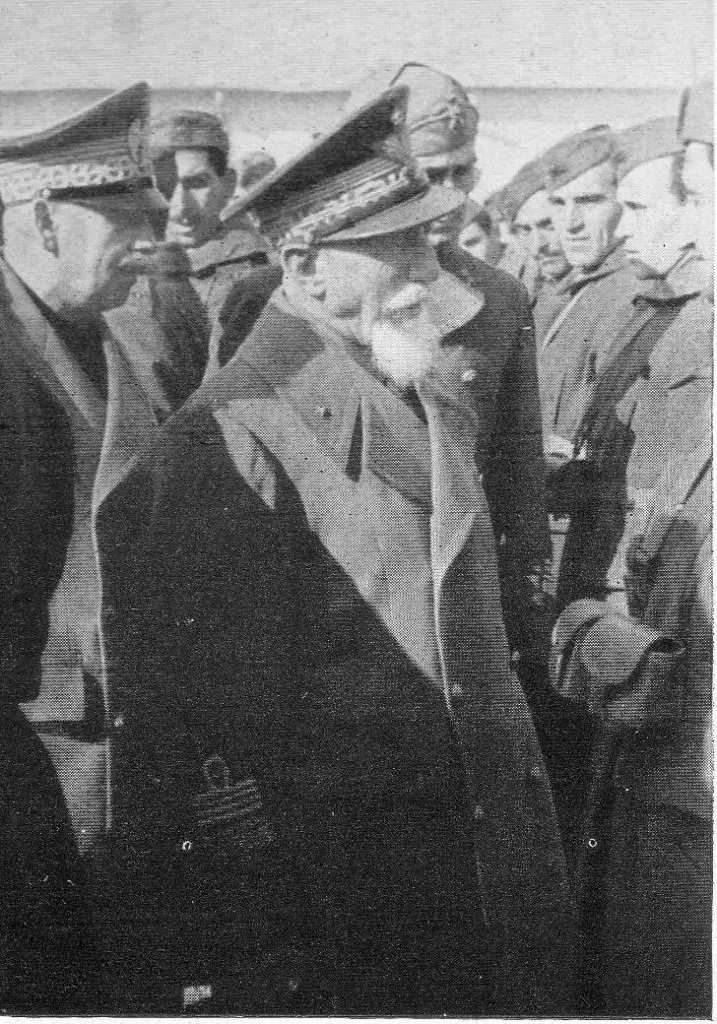Background of Emilio De Bono
Son of a career military officer, Emilio de Bono was born in Cassano D’adda on 19 March 1866. After completing the Milano Military College, and the Modena Military Academy, he became a Lieutenant in 1886 and enrolled as voluntary on the III Bersaglieri regiment in the Eritrea colonial war.

General De Bono in 1937.
After completing the war academy in 1887, Emilio De Bono became a Captain in the VII Army Corps and a Major in 1907. As a Lieutenant Colonel in Libya between 1911-1912, he was responsible for the organization of the Navy logistical bases in Misurata. De Bono went on to become the Capo di Stato Maggiore (Chief of Staff) of the 1° Special Division.
Service in World War One
De Bono was the Capo di Stato Maggiore of the II Army Corps at the beginning of the First World War in 1915. He then became the commanding Colonel of the XV Bersaglieri Regiment on the Carsian front and of the Trapani Brigade in 1916.
De Bono distinguished himself with the conquest of Gorizia in August 1916. He became General commander of the Savona Brigade, then of the 38° division, and thereafter of the entire Corpo d’Armata D’Albania in 1917. De Bono commanded the IX Corpo d’armata in the Monte Grappa front in 1918. He distinguished himself on the Second Battle of the Piave River in June as well as the Battle of Vittorio Veneto that ended the war in October 1918.
Decorated with 3 military silver medals and commander of the Savoia Military Order, from January 1919 to January 1920 Emilio De Bono commanded the occupation troops of the XII° Army Corps in Austrian territory and in Verona.
Original Quadrumvir of the Fascist Party
Disappointed with the government after the First World War, he became a member of the Fascist party and obtained a transfer to the Reserves for personal and political reasons.
Known as the “Bloody Christmas” of 24 to 30 December 1920. De Bono viewed the Italian military actions in the free state if Trieste with a mix of satisfaction and disapproval. The disappointment stemming especially from the breakdown of military discipline.
He cultivated a friendship with the Duke D’Aosta, who inspired De Bono with his monarchic nationalist feelings. He also collaborated with journalist Giovanni Amendola’s “il Mondo” on military subjects.
In August 1922 he wrote the stormtroopers Discipline Regulation along with De Vecchi. The Discipline Council of the Royal Army ignored this regulation. As an official, De Bono appeared to be organizing a para-military party force, which led him to quit the Regio Esercito until the following November.

The quadrumvirs lead the March on Rome. L-R Emilio De Bono, Benito Mussolini, Italo Balbo, and Cesare Maria De Vecchi
He organized and participated in the March of Rome between 27-29 October 1922 as one of the four original Quadrumvirs. De Bono, along with Fara and Ceccherini, represented the only Italian Generals that participated.
Role in Mussolini’s Fascist Government
Despite not having any political background, Emilio De Bono became a mediator between the military and Fascism. He became the commanding officer of the Fascist Militia that later became known as the MVSN. He attempted to regulate and institutionalize voluntary militias and proposed this goal in July 1923. However, it was decided to use the militia to achieve the integral “Fascistization” of the state.
He became general director of Public Security, Chief of Police and Senator of the first Mussolini ministry.
Murder of Giacomo Matteotti

Giacomo Matteotti.
De Bono played a role in the murder of leftist politician Giacomo Matteotti. Subsequently arrested for his part in the crime, he never confessed. Because of the new political climate created by Mussolini, the High Court of Justice found De Bono not guilty and released him in 1925.
Role in Colonization of Libya
From 1925 to 1928, he became governor of Tripolitania and repressed the rebellions against the Italian colonial domination. During this period he attempted the agricultural colonization of the Gebel region. He served as Minister of the state, Secretary and then Minister of the Colonial Affairs. In 1929, De Bono supported the definitive conquest of Libya.
Commanding Italian Invasion of Ethiopia

General De Bono at the beginning of the invasion of Ethiopia in 1935.
In 1935 Emilio De Bono became High Commissioner of Italian Africa. He strongly supported anti-Ethiopian policies and planned for the invasion of Abyssinia the following autumn. De Bono was the commander who developed the strategy of the Ethiopia invasion between September and November 1935. Italy quickly won the first battles at Adua, Axum, Makalle and Amba Alagi.
Despite the successes, De Bono defended his methodical advancement strategy in enemy territory. He paid particular attention to the security of communication lines and the consolidation of conquered territories.
But due to his slow progress and strategy, De Bono fell out of favor with the impatient Duce. For this reason, Field Marshal Pietro Badoglio replaced him as Commanding Officer on 17 December 1935. As a means of excuse, Mussolini promoted De Bono to Marshal of Italy a day earlier.

Emilio De Bono speaks to an Ethiopian soldier in 1935.
Falling out of Favor with Mussolini
The relationship with Mussolini, to whom previously De Bono referred to using the expression you (tu), cooled down. He also disapproved of the racial laws approved in 1938.
Inspector of Overseas Troops
In July 1939, he carried out an inspection of Italian troops on the French border. He highlighted a lack of training, and weaknesses such as lack of mechanization, modern fortifications, artillery, roads, and communications.
Following his nomination as overseas troops inspector, he produced two accurate reports of Italian troops in Albania (November 1939) and Egypt (February 1940). In these reports, he highlighted the lack of preparation of the Italian military and implicitly tried to stop the Italian entry in the war.

Marshal of Italy Emilio de Bono reviewing troops in Rhodes, Greece 1940.
Service in World War Two
Designated commander of the Southern Armies (III° Army, Sicily, Sardinia, Albania) in June 1940, he remained in the sidelines of political activity and military decision making throughout the remainder of the war. In 1942, he became Minister of State.
Vote to Remove Mussolini from Power
As a member of the Fascist Grand Council, he voted in favor of Dino Grandi’s No Confidence proposal on 24 July 1943 which ousted Mussolini from power.
After Mussolini’s arrest on 25 July 1943, Badoglio assumed control and dissolved the Fascist Party and the MVSN.
An Uncertain Future
The pages of his personal diary testify the dismay of the following weeks. The Allies invaded Sicily and Calabria. The Germans fought in the South with the Italians. The Germans also penetrated the Brenner Pass and the Po Valley with plans of assuming control of the valley (Operation Achse).
As a result, Badoglio’s government proposed following an intermediated path. With an objective to control the internal order, and not irritate the Nazis in the hope of avoiding strong and bloody reprisals.
He attempted to achieve an armistice with the Allies and change the Italian position in the war. However, Badoglio’s strategy ruined his standing with anti-fascists who criticized him for not restoring democratic freedoms and not removing the regime’s protagonists. On the other hand, radical Fascists accused him of disassembling the Fascists institutional framework which lasted 20 years.
A Man Without a Country
De Bono was one among many Italians, monarchists, republicans, Fascists, and anti-Fascists, who did not understand the cultural wave gripping Italy.
Afraid of a communist takeover due to the Italian political difficulties, he took an anti-revolutionary stand.
On 30 July 1943, he wrote:
I never felt as Fascist as now.
While in Rome on the 9th of September, he presented himself to Marshal Caviglia, who was attempting to control the unraveling situation following King Vittorio Emanuele III and Badoglio’s transfer to Brindisi. He criticized Badoglio’s actions during the armistice and referred to it as “maramaldesco”, or being bullied.
When the Battle of Rome concluded, De Bono attempted to contact Mussolini who had just been released from Gran Sasso on 12 September 1943. De Bono appears to have received vague promises of a safe reception. But ultimately he decided to join neither the Southern Kingdom nor the Fascist Republic.
Verona Trial and Death

The Verona Trial of 1944. De Bono if far left with his hands of his head. To his left is Carlo Pareschi, Galeazzo Ciano, Luciano Gottardi, Giovanni Marinelli and Tullio Cianetti.
His arrest occurred on 4 October 1943. Due to his age, they placed him in the hospital in Verona. De Bono stood trial in a special court set up by the Fascist Republican Party’s Congress. Charged as a supporter of Grandi’s proposal, he was sentenced to death for treason.
In the appeal for grace, Emilio De Bono highlighted how he could not accept such an infamous accusation. Despite this, he was executed with Gian Galeazzo Ciano, Luciano Gottardi, Giovanni Marinelli and Carlo Pareschi on 11 January 1944. He was 77 years old.